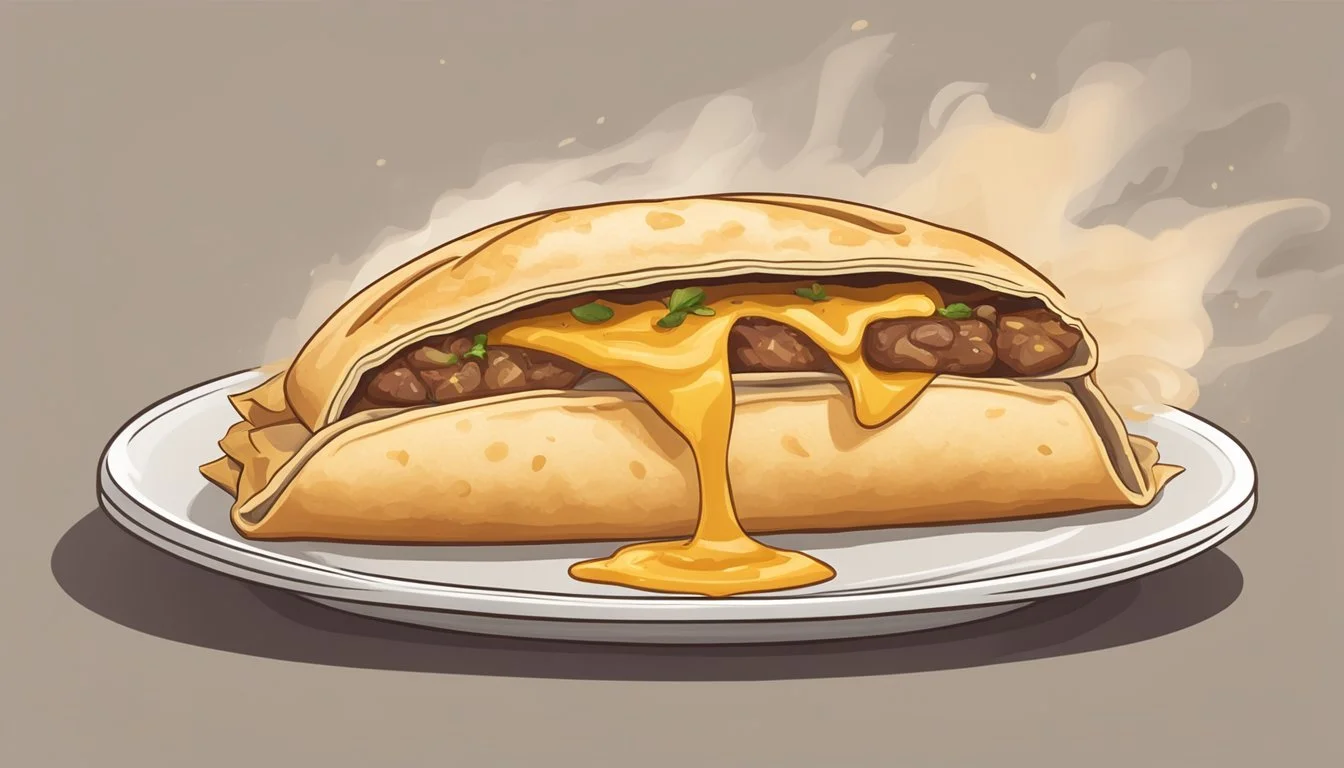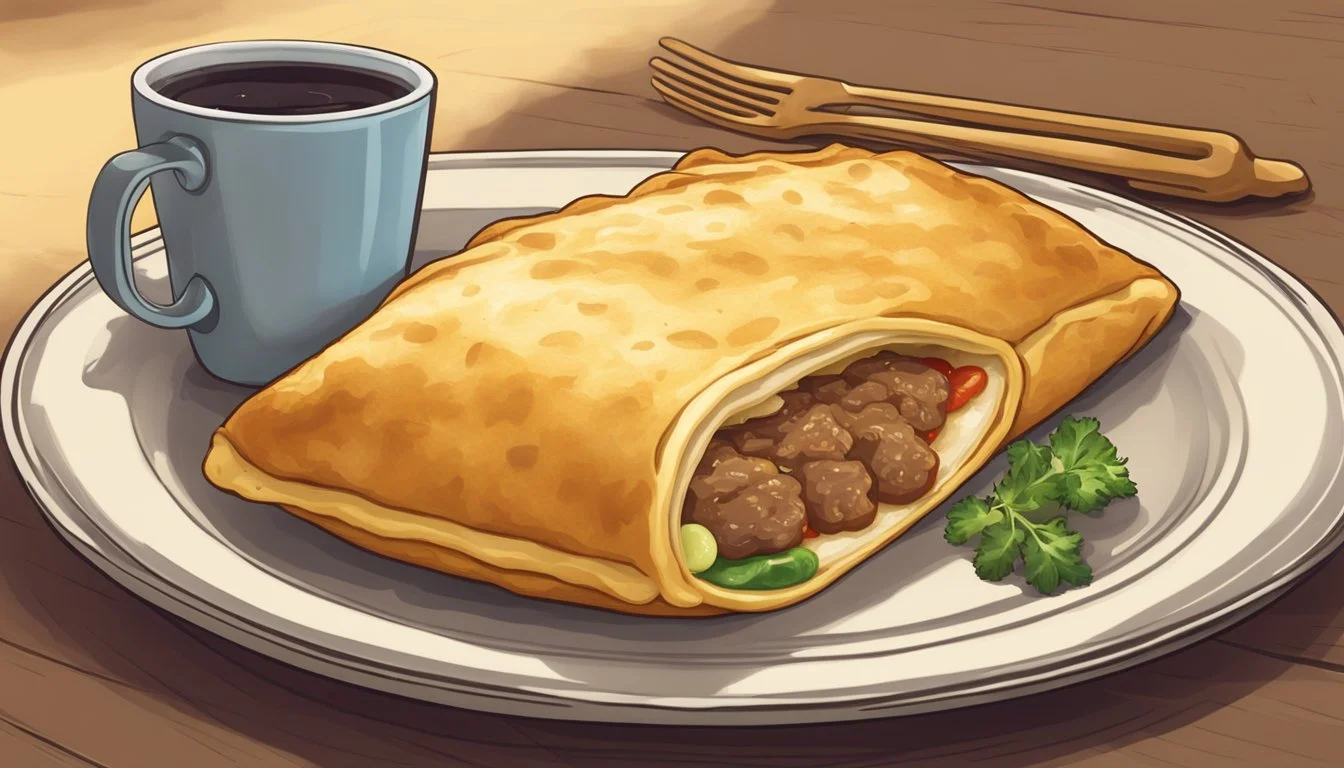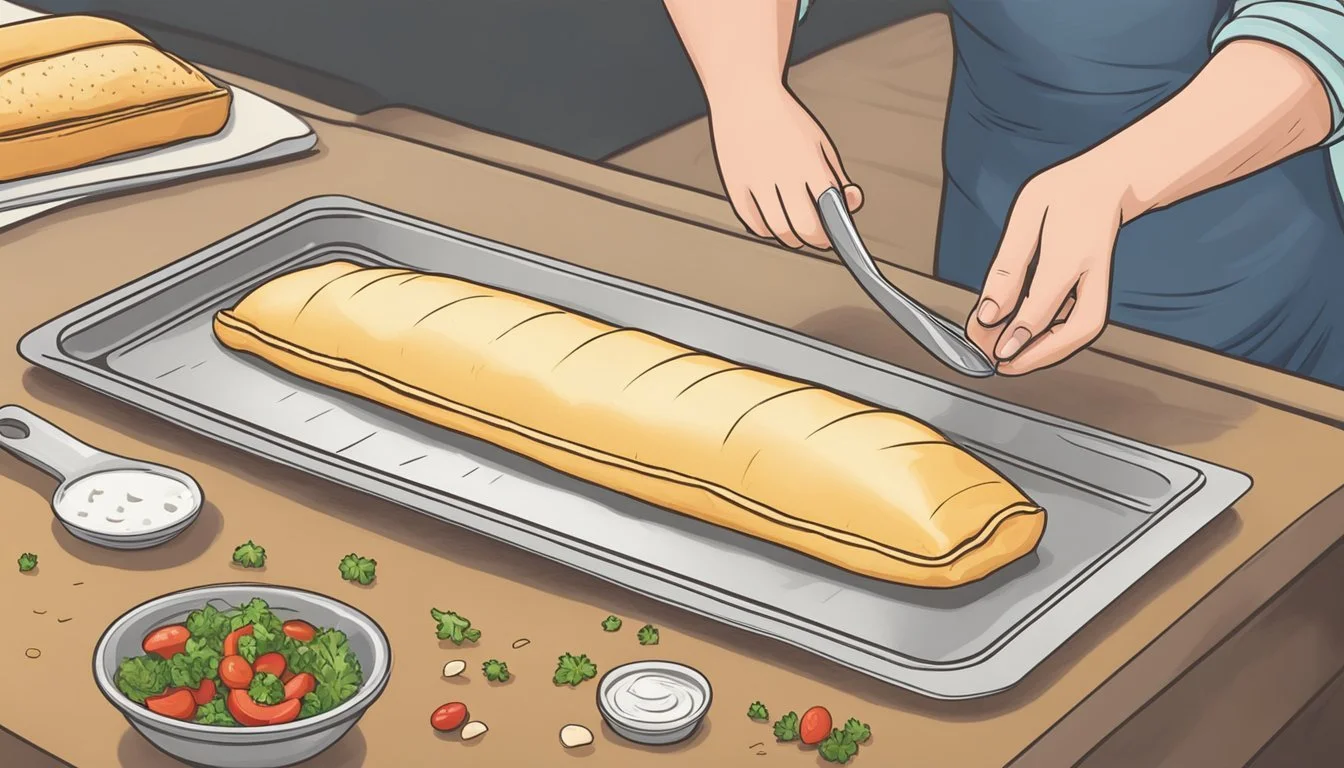How Long Do Beef Hot Pockets Last?
Storage Tips and Shelf Life
Hot Pockets have become a staple in many households, offering a quick and convenient meal option, especially when packed with hearty fillings like beef. Understanding the shelf life of these popular snacks is key to enjoying them safely and at their best quality. Beef Hot Pockets typically have a shelf life of around 14 months from the date of manufacture when stored properly in the freezer.
The expiration date printed on the packaging serves as a guideline mandated by food safety regulations, but these savory snacks can often remain edible for some time beyond this date if kept frozen. However, it's still important to regularly check for any signs of freezer burn or deterioration to ensure they are still good to eat.
For those preparing homemade beef Hot Pockets, proper storage is crucial to maintain their quality. Cooked Hot Pockets should be consumed within a few days if stored in the refrigerator, while freezing can extend their longevity significantly. Knowing these storage tips can help keep your Hot Pocket experience delicious and safe.
Understanding Hot Pockets
Hot Pockets are popular, convenient snacks known for their diverse flavors and quick preparation. They combine various ingredients within a dough exterior and can be found in stores with different packaging to ensure shelf-life.
Composition and Varieties
Hot Pockets consist of a crust filled with ingredients like cheese, meat, and vegetables. They are available in several flavors, such as ham and cheese, pepperoni, and even veggie options. This variety caters to different taste preferences.
These snacks can be analogized to calzones, sandwiches, or inside-out pizzas. The dough varies in style, including flaky pastry, seasoned crust, or even whole grain varieties. The filling can contain items like roast beef, making it a versatile snack option for any meal.
Packaging and Storage Requirements
Manufacturers package Hot Pockets with best by or expiration dates, typically 14 months post-manufacturing. Proper storage is crucial to maintain quality.
Stored in the freezer, they remain safe to eat beyond the expiration date. Each package includes instructions clearly stating recommended storage and preparation methods, whether in the microwave or oven. This information helps consumers maximize the product's longevity and safety.
Convenience and Popularity
The convenience of Hot Pockets makes them a staple in many households. They can be prepared quickly in a microwave, often taking just 2-3 minutes, or in an oven, which typically requires 20-30 minutes. This rapid preparation time suits busy individuals looking for a quick, ready-to-eat meal.
Their popularity stems from their versatility and ease of use. Different flavors and fillings like cheese, pepperoni, and roast beef allow for varied meal options without extensive preparation. This versatility appeals to diverse consumer preferences, contributing to their widespread success.
Storage of Beef Hot Pockets
Proper storage of beef Hot Pockets ensures that they remain safe and delicious for as long as possible. Key areas to consider include freezing, refrigeration, shelf life under different conditions, and recognizing spoilage indicators.
Freezing and Refrigerating
Beef Hot Pockets should be stored in the freezer if they will not be consumed immediately. Freezing them helps maintain their quality for up to six months. Ensure they are placed in airtight packaging or vacuum-sealed to prevent freezer burn, which can deteriorate texture and flavor due to moisture loss.
If planning to use them within a day or two, the fridge is an appropriate short-term storage solution. However, refrigeration is less ideal long-term as bacteria growth can still occur, albeit more slowly than at room temperature. Once thawed, consume promptly to avoid spoilage.
Shelf Life in Different Conditions
The shelf life of beef Hot Pockets varies based on storage conditions. Frozen, they last up to six months, retaining most of their original flavor and texture. In the fridge, they should be consumed within 1-2 days to ensure quality and safety.
At room temperature, they quickly become susceptible to spoilage. Preservatives in the crust and filling do slow down deterioration slightly but do not make them shelf-stable. Always check the expiration date on the packaging and follow storage guidelines to ensure the Hot Pockets are safe to eat.
Indicators of Spoilage
Recognizing signs of spoilage is crucial to avoid food poisoning. Common indicators include an off smell, changes in color, and the presence of mold. A slimy texture or any unusual moisture on the surface also suggests bad Hot Pockets.
While freezer burn does not render Hot Pockets unsafe, it affects their quality. To test, ensure there is no frost buildup inside the packaging. If any of these signs are present, it is best to discard the product to prevent consuming spoiled food.
Preparing Beef Hot Pockets
Ensuring the perfect preparation of beef hot pockets involves precise cooking times and methods to achieve the desired texture and flavor.
Cooking Instructions
Microwave: For convenience, use a microwave. Start by unwrapping the hot pocket and placing it in the provided crisping sleeve. Put it on a microwave-safe plate. Cook on high power for 2 to 3 minutes, depending on your microwave's wattage. After microwaving, let it sit for a couple of minutes to ensure the filling doesn't burn.
Oven: Using an oven can yield a crispier crust. Preheat the oven to 350 degrees Fahrenheit. Prepare a baking sheet by lining it with parchment paper or placing the hot pocket directly on it. Bake for 20-25 minutes till the crust turns golden brown. Allow it to rest before eating.
Alternative Cooking Methods
Air Fryer: For a crispy crust, place the hot pocket in the air fryer preheated to 370 degrees Fahrenheit. Cook for 10-12 minutes, turning halfway through. Ensure it reaches an internal temperature of 165 degrees Fahrenheit.
Toaster Oven: Similar to conventional ovens but quicker. Preheat to 350 degrees Fahrenheit. Place the hot pocket on the toaster oven tray. Bake for 18-20 minutes until the crust is golden and the filling is hot.
For all methods, cooling for a few minutes helps avoid burns and enhances flavor. Avoid microwaving for too long, which can result in a soggy crust. Adjust cook times based on personal appliance variations for best results.
Taste and Quality Preservation
Ensuring the best taste and quality of beef Hot Pockets involves careful consideration of both texture and flavor. Proper storage and preparation methods play crucial roles in keeping these elements at their peak.
Optimizing Texture
To achieve a crispy crust and avoid sogginess, proper heating is key. Cooking in a microwave often results in a soggy texture due to uneven distribution of moisture. For a crispy crust, baking in a conventional oven is preferable. This method allows excess moisture to evaporate, maintaining the desirable crispy crust that enhances the overall eating experience.
Additionally, using a toaster oven can provide similar results. Allowing the Hot Pocket to cool for a moment before consumption also helps in solidifying the texture, making it less likely to become overly soft. Avoiding overcooking is essential, as it can result in a dry and tough exterior while the inside becomes overly steamy.
Maintaining Flavor
The flavor of beef Hot Pockets is largely influenced by the moisture and quality of the filling. Storing them in the freezer helps preserve their savory taste for a longer period, but consuming them within a reasonable timeframe—ideally within a few months—ensures the best flavor profile.
When preparing, an egg wash applied to the crust before baking can add an enhanced savory note and better crust flavor. Adding a pinch of salt or a small amount of sauce on top before heating can also bring out richer flavors. Letting the Hot Pocket cool slightly after heating also helps to savor the beef's full flavor, as the ingredients have time to settle and meld together.
Health and Safety Considerations
When consuming beef hot pockets, it is crucial to follow specific health and safety practices. This involves handling the food properly and understanding its nutritional content to avoid any potential risks.
Safe Consumption Practices
To ensure beef hot pockets are safe to eat, they must be stored and cooked correctly. Store hot pockets in the refrigerator for no more than 2-3 days to maintain freshness and prevent mold growth. For longer storage, keep them in the freezer at 0°F (-18°C) or below.
When preparing, cook hot pockets until the internal temperature reaches at least 165°F (73.9°C) to kill any harmful bacteria. Avoid refreezing thawed hot pockets, as this can compromise safety. Regularly check for any unusual smells, colors, or textures, as these can indicate spoilage.
Nutritional Information
Beef hot pockets contain various ingredients, including beef, cheese, and vegetables. Each pocket's nutritional profile can vary, but common components include protein, carbohydrates, and fats. They often contain preservatives to extend shelf life.
Pay attention to dietary considerations, such as dairy content for those with lactose intolerance and the presence of veggies for added nutrients. It's essential to check the nutritional label for specific values, such as calories, sodium, and sugar levels, to align with dietary needs and maintain a balanced diet.
Monitoring these aspects can help manage nutritional intake effectively while enjoying beef hot pockets.
Making the Most of Leftovers
Leftovers from delicious meals like beef hot pockets can be managed to retain quality and safety. It is essential to follow proper storage methods.
Storage Time: Store beef hot pockets in the fridge within 2 hours of cooking. They are safe to eat for up to 4 days.
Freeze for Longevity: For longer storage, you can freeze leftovers. Beef hot pockets can last about 3-4 months in the freezer.
Reheating Leftovers: Reheat leftovers to an internal temperature of 165°F (74°C) to ensure safety. Use a microwave or oven for even heating.
Vacuum Sealing: For optimal quality, consider vacuum sealing before freezing. This helps in preserving flavor and texture.
Keep Track: Always label leftovers with the date they were prepared. This is crucial to manage expiration effectively.
Table for Quick Reference:
Storage Method Time Limit Refrigerator Up to 4 days Freezer 3-4 months
Remember to consume or discard leftovers before their expiration date to avoid foodborne illnesses. Proper handling ensures you enjoy your beef hot pockets safely and deliciously.
DIY Beef Hot Pockets
Homemade beef hot pockets can be a tasty and satisfying alternative to store-bought options. By using common kitchen ingredients, you can control the quality and freshness of the food.
Alternative Homemade Recipes
Basic Beef and Cheddar Hot Pockets:
Start with prepared pizza dough, rolling it out to a 20 by 12-inch rectangle. Cut it into 8 squares. For the filling, cook ground beef with your preferred seasonings. Add shredded cheddar cheese. Place a portion of the beef mixture in the center of each dough square, then fold and seal the edges.
Bake at 400°F for 18-20 minutes, until golden brown.
Breakfast Sausage Pockets:
For a morning twist, use a similar dough preparation method. Cook breakfast sausage and scramble some eggs. Mix these with shredded cheese. Use the filling in the same way as with the beef, securing the edges tightly.
Bake until the pastry is fully cooked, about 15-18 minutes.
Vegetarian Option:
Use a combination of sautéed mushrooms, spinach, and diced bell peppers. Add shredded mozzarella or cheddar cheese. Follow the same dough preparation process, folding and sealing the edges.
Cook in the oven at 375°F for approximately 15 minutes, or until golden and crispy.
Each recipe offers a quick meal that's both versatile and delicious, suitable for various times of the day.
Purchasing Tips
When buying beef Hot Pockets, it's essential to select quality products and preserve their freshness for optimal taste. Here are some specific tips to guide you when purchasing these convenient snacks.
Selecting the Best Product
Expiration Date: Always check the expiration date on the package. Hot Pockets typically have a shelf life of 14 months from manufacturing. If close to the expiration date, prioritize using them sooner.
Storage Directions: Ensure Hot Pockets are kept in the freezer section at your supermarket. Keeping them frozen preserves their quality better.
Multiple Flavors: Hot Pockets come in various flavors, including BBQ beef. Having multiple options allows for variety in snacks while ensuring fresh choices each time.
Packaging Condition: Examine the packaging for any signs of damage. Packages in good condition help maintain the product's integrity.









